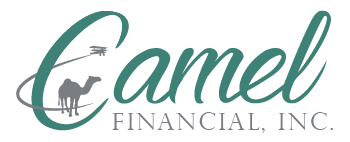Its Thursday at 4pm. Payroll is tomorrow, and your business bank account is quickly approaching the negative. You’re confused. This was one of your best months yet with sales through the roof – but they’re all on terms. You’re forced to wait 30, 60 or even 90-days to get paid.
This scenario is all too common for businesses in their early years and even during the mature stages. Don’t stress, be proactive and stay liquid with Camel Financial.
When Growth is the Goal
Growth is a priority for young companies. The need to acquire market share and drive sales extends past trying to land private equity funding or plan for an exit. Sales are the reason a company exists; and without them, its just a costly idea. However, focusing on driving continued sales may cause serious cash-flow problems. Ads are costly and due upfront; sales promotions help move inventory in hopes of generating continued interest but dimmish margins; and most importantly, payroll is every other week regardless of collections.
When You’ve Been Around the Block
Mature companies face the same collection issues as start-ups but with a small twist. Established relationships begin to take on a more one-sided approach with long-term customers. Purchasers will pound sellers for better pricing and elongated terms citing increased competition and limited floor space or slow-moving product. The purchasers then begin taking every discount on any payment regardless of whether they align with the contract. To maintain the relationship and consistent volume, mature sellers will bend to the demands and never raise an issue with the unjustified discounts.
The P&L May Be Misleading
Most owners prioritize the Profit & Loss Statement to judge the health of the business. Its relatively straight forward and has one of the most important pieces of information for any business – profitability. However, most companies utilize accrual accounting to measure their financial performance and while the P&L does align with “sales” throughout the period, it does not speak to the cash activity happening within that period. Sales does not necessarily translate to cash, and this is especially true if most or all company-wide sales are on terms. What may seem like the best month of your business may be the month that holds you back if you can’t stay liquid.
Know & Grow the Balance Sheet
Offering terms is a great way to build repour with new customers and allow for larger transactions to take place. While the delay in payment is a cash-flow problem, the volume and profitability of the sale should help offset the wait. The increase in assets creates positive cash need which justifies a leverageable opportunity. Work has been completed or product has been delivered so the probability of collection is high. Banks and alternative lenders put more emphasis on a positive balance sheet than they do a positive P&L. The P&L ensures a company is making a profit, but the Balance Sheet affirms that any loan made can be paid bank.
While the balance sheet is the indicator for opportunity, it still doesn’t solve the immediate problem of cash-flow. This is where liquidity comes in. Because the assets have inherent value and proper procedures have been put in place to assure limited discounts, balance sheet assets are able to be leveraged to generate cash flow.
Think personally about a mortgage on a house. The real estate is the value of the asset, and the mortgage is the liquidity generated from that asset value to pay for the property. Balance Sheet assets work the same way whether it be a piece of equipment, inventory, or accounts receivable. Finance companies and banks can leverage the asset value to provide cash on a portion of the outstanding value. Like a mortgage there are limits to the loan-to-value, but the process is relatively similar except in this case the deed is the actual invoice of the products delivered.
Leveraging Liquidity
Now that the balance sheet has grown, its time to put those assets to work. Banks offer Asset-Based Lending products but are limited on draws and inflexible size. Factoring companies may purchase parts of your AR but limit others. Alternative ABL, like with Camel Financial, allows you to blend your AR and inventory into a borrowing base. companies can access liquidity within all their current assets. This allows for smoother operations and opportunities for more rapid growth or recovery.
Don’t Get Stuck Waiting
Instead of waiting for the opportune collections, being proactive and finding a financing partner that can work through a balance sheet and identify opportunities for liquidity. The process takes some time to complete but has the ability to unlock a company’s full potential without adding to existing debt and instead add liquidity to the bottom line.
Do you know a company with liquidity problem? Have them contact the team at Camel Financial and stay liquid! To learn more about our accounts receivable financing solutions and business loans, call us today at (949) 722-7717.


